Grandma’s Kitchen Secrets : 10 Forgotten Indian Superfoods!

Table of Contents
The Return of Grandma’s Wisdom
Grandma’s Kitchen already had its own superfood store, before kale and quinoa filled modern pantries. Jars filled with fragrant seeds, earthy roots, and magical mixtures known to heal everything from fatigue to hormonal imbalances.
It’s heartwarming to see how modern science is now shedding light on the age-old wisdom passed down through generations, showing us that health is often about connecting with our roots rather than relying solely on trendy imports.
From the iron-rich curry leaves to the adaptogenic power of shatavari, these traditional staples remind us that we don’t need to look far to nurture our bodies. Here are 10 forgotten Indian superfoods from Grandma’s Kitchen, brought back to life with a sprinkle of modern nutritional insight.
10 Indian Superfoods from Grandma’s Kitchen
1. Curry Leaves : The Iron-Rich Cleanser
Grandma’s Note:
“Child, your hair looks a little dull! Start eating curry leaves, they cleanse the blood and bring back the natural shine to your hair and face.”
Modern Science:
Curry leaves (Murraya koenigii) are more than just a fragrant addition to your meals; they’re packed with iron, antioxidants, and unique compounds that support liver detoxification and promote hair growth.
A 2024 study found that curry leaf extract improves red blood cell regeneration and helps manage iron-deficiency anaemia by enhancing iron bioavailability and reducing oxidative stress1
Their natural polyphenols also help regulate blood sugar, making them a quiet ally in preventing metabolic disorders.
Try It In:
Add fresh curry leaves to your morning tadka or whip up a spicy coconut chutney with them, this zesty side dish will not only brighten your meals but also purify your blood.
2. Gond (Edible Gum) : The Strength Builder
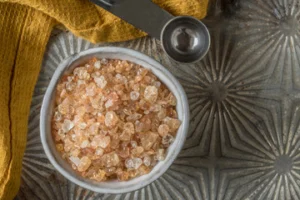
Grandma’s Note:
“In winter, have a gond ladoo every day, it strengthens your bones and keeps your energy steady!”
Modern Science:
Derived from the sap of the Acacia tree, gond has been a staple for postpartum recovery and winter nourishment for ages. It’s a powerhouse of calcium, magnesium, and soluble fiber, essential for strong bones and gut health.
Recent research shows that the prebiotics found in natural gums help nurture good gut bacteria, boosting digestion and immune health.2
And yes, gond is a slow-release carbohydrate that provides steady energy for those long days.
Try It In:
Enjoy traditional gond ke laddoos made from roasted wheat flour and ghee, or mix soaked gond into warm milk for a comforting, nourishing bedtime tonic.
3. Makhana (Fox Nuts) : The Mindful Snack
Grandma’s Note:
“Feeling hungry on an empty stomach? Roast some makhana with a pinch of salt, it’ll fill you up and keep you healthy.”
Modern Science:
Makhana, or fox nuts, are light yet satisfying. They’re rich in plant protein, magnesium, and low-glycemic carbohydrates.
A 2025 review found that regular consumption of makhana supports satiety and stabilizes blood sugar in individuals with prediabetes.3
The amino acid profile of makhana includes arginine and glutamic acid, which enhance brain health and focus, giving modern “mindful snacking” a traditional twist.
Try It In:
Roast makhana in ghee with a sprinkle of rock salt for a crunchy evening delight, or blend powdered makhana into kheer and gravies for an extra protein kick.
Check Out Pink Tiger Verified Makhana
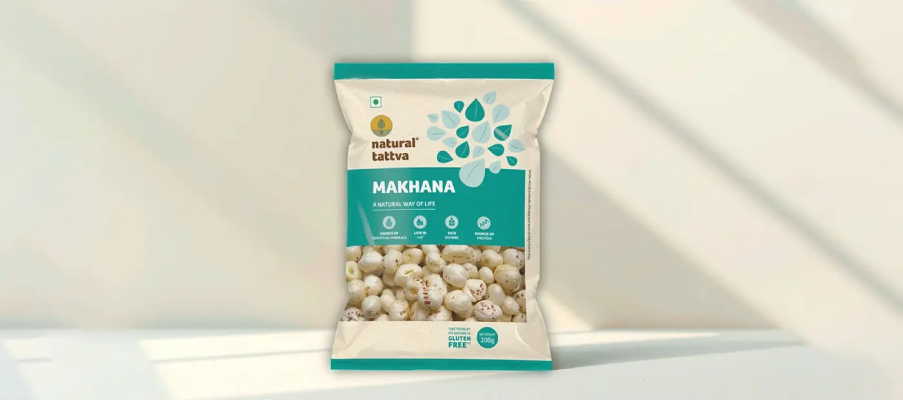
4. Black Sesame Seeds : The Hair & Hormone Hero
Grandma’s Note:
“Eat sesame seeds, my dear they delay greying hair and build inner strength.”
Modern Science:
Black sesame (Sesamum indicum) is loaded with lignans, calcium, and healthy fats that nourish the endocrine system and support hormonal balance; especially in women.
A 2024 study showed that sesame seed lignans can naturally regulate estrogen levels and improve lipid metabolism.4
The seeds’ high zinc and vitamin E content also promote collagen formation and prevent premature greying.
Try It In:
Sprinkle roasted black sesame seeds on salads, incorporate them into laddoos, or combine them with jaggery for a delightful til chikki, the kind of sweet that nourishes while it satisfies.
5. Kokum : The Cool Healer
Grandma’s Note:
“No matter what you do in the heat of summer, always sip on kokum sherbet. It cools the body and calms the spirit.”
Modern Science:
Kokum (Garcinia indica), native to India’s Western Ghats, is known for its cooling and anti-inflammatory properties. Its anthocyanin compounds, particularly garcinol, have been found to reduce inflammation and oxidative stress markers.
A 2025 study observed that kokum extract helped lower triglyceride levels and supported liver function by reducing oxidative damage.5
Kokum is also a potent natural probiotic enhancer, aiding digestion and preventing acidity during summer.
Try It In:
Add kokum to dal, curries, or fish preparations for a tangy twist or make a refreshing kokum sherbet with cumin, rock salt, and jaggery.
6. Amaranth (Rajgira) : The Ancient Protein Grain
Grandma’s Note:
“Enjoy rajgira laddoos or porridge they pack a punch of strength yet feel easy on the stomach.”
Modern Science:
Amaranth is one of the most protein-rich ancient grains containing lysine, an amino acid missing in most cereals. It’s also gluten-free and rich in calcium, magnesium, and squalene (a potent antioxidant).
In a 2024 study published, amaranth flour improved lipid profiles and reduced markers of inflammation in participants with mild metabolic syndrome.6
Its high-quality protein makes it ideal for vegetarians, while its resistant starch supports digestive health.
Try It In:
Prepare rajgira kheer, use its flour in parathas, or add popped amaranth to your breakfast bowl; a light yet protein-packed way to start the day.
7. Bael (Wood Apple) : The Forgotten Gut Superfood
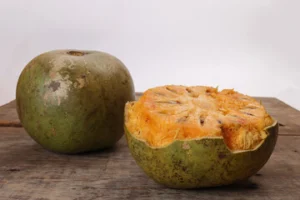
Grandma’s Note:
“Drink bael sherbet, child it keeps your digestion strong and drives away the summer heat.”
Modern Science:
Bael, or Aegle marmelos, has long been a beloved companion in Grandma’s kitchen, particularly during those sweltering summer days. It was her secret weapon for soothing digestion and keeping the body cool. Today, science backs up her age-old belief bael pulp is packed with tannins, pectin, and marmelosin, which help fight inflammation and keep nasty bugs at bay.
In a recent study published (2024), researchers found that bael fruit extract helps balance gut bacteria and ease intestinal inflammation by interacting with the gut-brain axis.7
Try It In:
Try blending fresh bael pulp with a bit of jaggery and a sprinkle of black salt. It’s a refreshing summer drink that’s both delicious and medicinal. You can also whip up a bael chutney to serve alongside heavier meals.
8. Ratanjot (Alkanet Root) : The Natural Colour & Healing Root
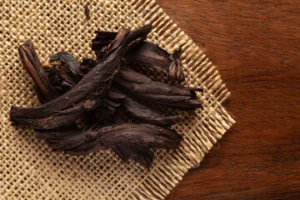
Grandma’s Note:
“That red colour isn’t just pretty, it helps wounds heal and melts away tiredness!”
Modern Science:
Ratanjot, known scientifically as Alkanna tinctoria, has historically been used to add a beautiful hue to foods and oils. But Grandma knew it was more than just a pretty face; it’s a powerhouse of healing! With compounds like alkannin and shikonin, it shows strong antioxidant and antimicrobial properties.
A 2025 study published findings showing that alkannin derivatives support skin repair and wound healing by promoting collagen synthesis and reducing oxidative stress. The root’s carotenoids and flavonoids also contribute to improved immunity and skin health.8
Try It In:
Infuse ratanjot in warm coconut oil, and you’ve got yourself lovely natural hair and skin oil. You can also add it to your gravies, while it gives an earthy red color, it’s also working to reduce inflammation.
9. Shatavari : The Ayurvedic Adaptogen
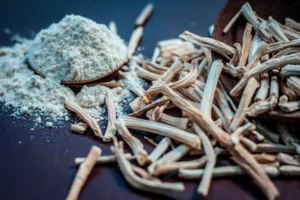
Grandma’s Note:
“Shatavari is every woman’s best friend; it brings calm and strength from within.”
Modern Science:
Shatavari (Asparagus racemosus) is known in Ayurveda as the “Queen of Herbs” for its ability to balance hormones, support reproductive health, and reduce stress. Modern research strongly supports these claims.
A 2024 randomised study demonstrated that shatavari supplementation improved hormonal balance and reduced menopausal symptoms by modulating estrogen receptors.9
Try It In:
Mix a spoonful of shatavari powder into a warm glass of milk with a pinch of cardamom before bedtime. It’s a soothing nightly ritual that not only tastes good but also aligns with what science suggests for hormone balance.
10. Moringa : The Green Powerhouse
Grandma’s Note:
“These leaves may look like mustard greens, but moringa is nature’s medicine for almost everything!”
Modern Science:
Moringa (Moringa oleifera), affectionately referred to as the “drumstick tree,” is celebrated for its incredible nutritional profile. It’s rich in vitamins A, C, and K, calcium, and proteins. While Grandma saw it as a staple, it’s now recognized globally as a superfood.
A 2025 study found that moringa leaf powder can significantly enhance glucose metabolism and reduce oxidative stress, especially in adults grappling with metabolic syndrome. Plus, its natural compounds support liver detoxification and boost energy levels.10
Try It In:
Incorporate dried moringa powder into your smoothies, parathas, or lentil soups for a nourishing, iron-rich twist. You might even toss some fresh moringa leaves into your dals, your body will reap the benefits.
How to Use These Superfoods – Practical Tips from Grandma’s Kitchen
Grandma’s wisdom wasn’t just about what to eat, but how to make food a part of life.
These timeless habits turn her ingredients into everyday allies, without overthinking nutrition charts or trends.
1. Match Your Food to the Season
Seasonal eating was a hallmark of Grandma’s kitchen. During summer, she’d serve cooling drinks like kokum sherbet and refreshing bael juice. In winter, hearty treats like gond laddoos and rajgira would keep us warm. Scientific research emphasizes that eating foods in sync with the seasons can help regulate metabolism and inflammation.
2. Combine Superfoods Smartly
There was always a method to her mixing madness. For example, she paired til (sesame) with jaggery to balance minerals.Combine curry leaves with ghee to enhance iron absorption. This is what modern nutritionists call “food synergy,” but to her, it was simply common sense.
3. Store and Soak : The Forgotten Steps
You could hear her saying, “Soak it overnight; it becomes lighter.”
From soaking makhana before roasting to pre-soaking grains like amaranth, these simple habits improve digestibility and minimize antinutrients. She kept seeds like black sesame or amaranth in glass jars, away from sunlight, a timeless way to preserve their nutrients without any fancy packaging.
4. Use as Daily Add-Ons, Not Occasional Fixes
For Grandma, these ingredients weren’t just occasional remedies but integral to daily life.
She’d include a handful of curry leaves in dishes and offer a spoonful of til or makhana with evening tea. Making these superfoods a part of your routine can work wonders for your overall health.
5. Heal Through Balance, Not Extremes
Grandma’s Kitchen wasn’t about restricting yourself; it was about finding that sweet spot. She never asked us to skip the rice at dinner but would always toss in a handful of rajgira or some moringa for that extra goodness. Her wisdom taught us that health isn’t about avoiding foods we love; it’s about blending and harmonizing them. It’s a lesson that today’s diet culture often skips over, leaving many of us feeling lost in a sea of “do nots.”
So, before reaching for imported powders or pills, take a look inside Grandma’s Kitchen; she probably had everything your wellness routine is still searching for.
Quick Reference: Grandma’s Notes Meets Modern Science
Let’s take a look at how Grandma’s everyday ingredients line up with today’s scientific insights, almost like she had a sixth sense about what our bodies really needed.
| Superfood | Grandma’s Note | Modern Science Says |
| Curry Leaves | Add them to every tadka, they make hair shiny and blood clean. | Rich in antioxidants and iron, it supports liver health and detoxification. |
| Gond (Edible Gum) | Have a laddoo in winter for strong bones and stamina. | Calcium-rich and prebiotic; strengthens joints and aids postpartum recovery. |
| Makhana (Fox Nuts) | Roast them for a light snack that fills your tummy, not your waist. | Low-calorie, protein-rich foods help maintain blood sugar and satiety. |
| Black Sesame Seeds | Eat til, keep your hair dark and bones strong. | Packed with lignans and minerals; supports skin, hair, and hormone balance. |
| Kokum | Drinking kokum sherbet in summer cools the body inside out. | Contains garcinol and anthocyanins that aid digestion and reduce inflammation. |
| Amaranth (Rajgira) | Rajgira laddoo gives energy without heaviness. | High in lysine and heart-healthy peptides; great for cholesterol and gut health. |
| Bael (Wood Apple) | Bael sharbat cools your stomach and calms acidity | Contains antimicrobial and anti-inflammatory phytochemicals for gut repair. |
| Ratanjot (Alkanet Root) | This red root heals wounds and adds colour naturally. | Antioxidant and antimicrobial; promotes skin repair and collagen synthesis. |
| Shatavari | A woman’s tonic brings calm and inner strength. | Ayurvedic adaptogen that supports hormonal balance and reduces stress. |
| Moringa | These green leaves cure everything from fatigue to weakness. | Rich in antioxidants; early studies show benefits for metabolic health. |
Why it matters:
Every ingredient from Grandma’s Kitchen had a purpose to nourish, balance, and heal. It’s like science is finally catching up to the age-old wisdom she handed down, giving her tried-and-true remedies the recognition they deserve.
Conclusion : A Kitchen That Heals
Grandma’s kitchen was never about fads or fashionable diets; it was rooted in pragmatism. A sprinkle of leaves in the tadka here, a handful of seeds in the laddoo there, a refreshing sherbet after a hot afternoon, these little rituals added resilience to our lives. Now that modern science is backing her wisdom, it’s time to rediscover those humble ingredients in our own pantries. You might just find that they are your best, most affordable wellness strategy.
Who knew that grandma’s kitchen was a superfood haven all along, just without the fancy labels? Next time you’re in the kitchen, let her wisdom guide you; you might be pleasantly surprised by what you find.
And if you’re looking to bring that same purity and trust into your modern lifestyle, explore Pink Tiger Verified products, carefully tested, transparent, and crafted to fit seamlessly into your daily routine.
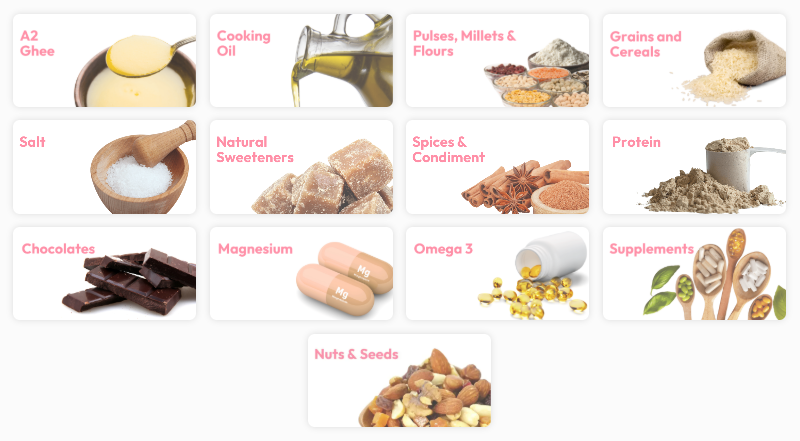
Frequently Asked Questions (FAQs)
1. What makes Grandma’s kitchen so special when it comes to nutrition?
Grandma’s kitchen was a treasure chest of Indian superfoods, herbs, and spices chosen not just for taste but for healing. Every ingredient had a purpose; from ghee for strong bones to curry leaves for cleanse guided by traditional wisdom that modern science is now validating.
2. How are Grandma’s notes relevant in today’s world of nutrition science?
Her notes often carried time-tested advice rooted in observation, like “eat til in winter” or “kokum for cooling.” Modern science now supports these, showing how sesame aids hormonal balance and kokum protects against oxidative stress. It’s proof that Grandma’s kitchen was India’s first nutrition lab.
3. How does today’s science support Grandma’s remedies?
Modern research has confirmed that Indian superfoods are rich in antioxidants, adaptogens, and phytonutrients. For instance, recent studies have highlighted moringa’s potential in improving metabolic health, while validate sesame’s impact on hormonal balance.
4. Are these Indian superfoods suitable for modern lifestyles?
Absolutely. They focused on balance and nourishment, exactly what fast-paced lifestyles lack. Including these superfoods in smoothies, porridges, laddoos, or teas is a simple way to bring traditional wisdom and modern nutrition together.
5. What makes Grandma’s kitchen ingredients so healthy?
Traditional ingredients from Grandma’s kitchen are minimally processed, seasonal, and nutrient-dense. They naturally support digestion, hormone balance, and immunity, something modern diets often miss.
Disclaimer : This content is for informational purposes only and is not a substitute for professional medical advice, diagnosis, or treatment. Always consult a qualified healthcare provider for any questions or concerns regarding your health.
References :
1. Al Arif, M. A., Rahman, M. A., & Islam, T. (2024). Phytochemical analysis and antioxidant activities of Murraya koenigii (curry leaf) extracts. Pharmacognosy Journal, 16(2), 471–479. https://phcogj.com/sites/default/files/PharmacognJ-16-2-471.pdf
2. Meghwal, M., & Goswami, T. K. (2023). Nutritional profile, functional characteristics, health benefits, and potential applications of edible gum (Gond). International Journal of Food Studies, 12(1), 45–60. https://www.researchgate.net/publication/361051756_Nutritional_Profile_Functional_Characteristics_Health_Benefits_and_Potential_Application_of_Edible_Gum_Gond
3. Jana, B., Kumar, M., & Raut, S. (2024). Antidiabetic biomolecules and nutrient elements in Makhana (Euryale ferox Salisb.). Annals of Phytomedicine an International Journal, 13(2). https://doi.org/10.54085/ap.2024.13.2.52
4. Kim, Y., Lee, J. H., & Park, S. (2024). Nutrient composition and antioxidant properties of black sesame (Sesamum indicum L.) seeds and oil. Plants, 13(2), 184. https://doi.org/10.3390/plants13020184
5. Lim, S. H., & Naidu, M. (2021). Garcinia indica (kokum): A phytochemical and pharmacological review. Frontiers in Pharmacology, 12, 8708457. https://www.ncbi.nlm.nih.gov/pmc/articles/PMC8708457/
6. Jan, N., Hussain, S. Z., Naseer, B., & Bhat, T. A. (2023). Amaranth and quinoa as potential nutraceuticals: A review of anti-nutritional factors, health benefits and their applications in food, medicinal and cosmetic sectors. Food chemistry: X, 18, 100687. https://doi.org/10.1016/j.fochx.2023.100687
7. Sharma, P., Gupta, R., & Nair, R. (2025). Probiotic fermented Aegle marmelos juice ameliorates experimental ulcerative colitis through gut–microbiome modulation in mice. Frontiers in Nutrition, 12, 11981707. https://www.ncbi.nlm.nih.gov/pmc/articles/PMC11981707/
8. Das, A., Kumar, P., & Verma, S. (2024). Evaluation of antioxidant and antimicrobial activities of Alkanna tinctoria root extracts. BMC Complementary Medicine and Therapies, 24(1), 45. https://www.ncbi.nlm.nih.gov/pmc/articles/PMC11275321/
9. Gudise, V. S., Sharma, R., & Bhat, R. (2024). Efficacy and safety of Shatavari (Asparagus racemosus) root extract for the management of menopausal symptoms: A randomized, double-blind, placebo-controlled clinical trial. Frontiers in Reproductive Health, 3, 11079574. https://www.ncbi.nlm.nih.gov/pmc/articles/PMC11079574/
10. Pareek, A., Pant, M., Gupta, M. M., Kashania, P., Ratan, Y., Jain, V., Pareek, A., & Chuturgoon, A. A. (2023). Moringa oleifera: An Updated Comprehensive Review of Its Pharmacological Activities, Ethnomedicinal, Phytopharmaceutical Formulation, Clinical, Phytochemical, and Toxicological Aspects. International journal of molecular sciences, 24(3), 2098. https://doi.org/10.3390/ijms24032098